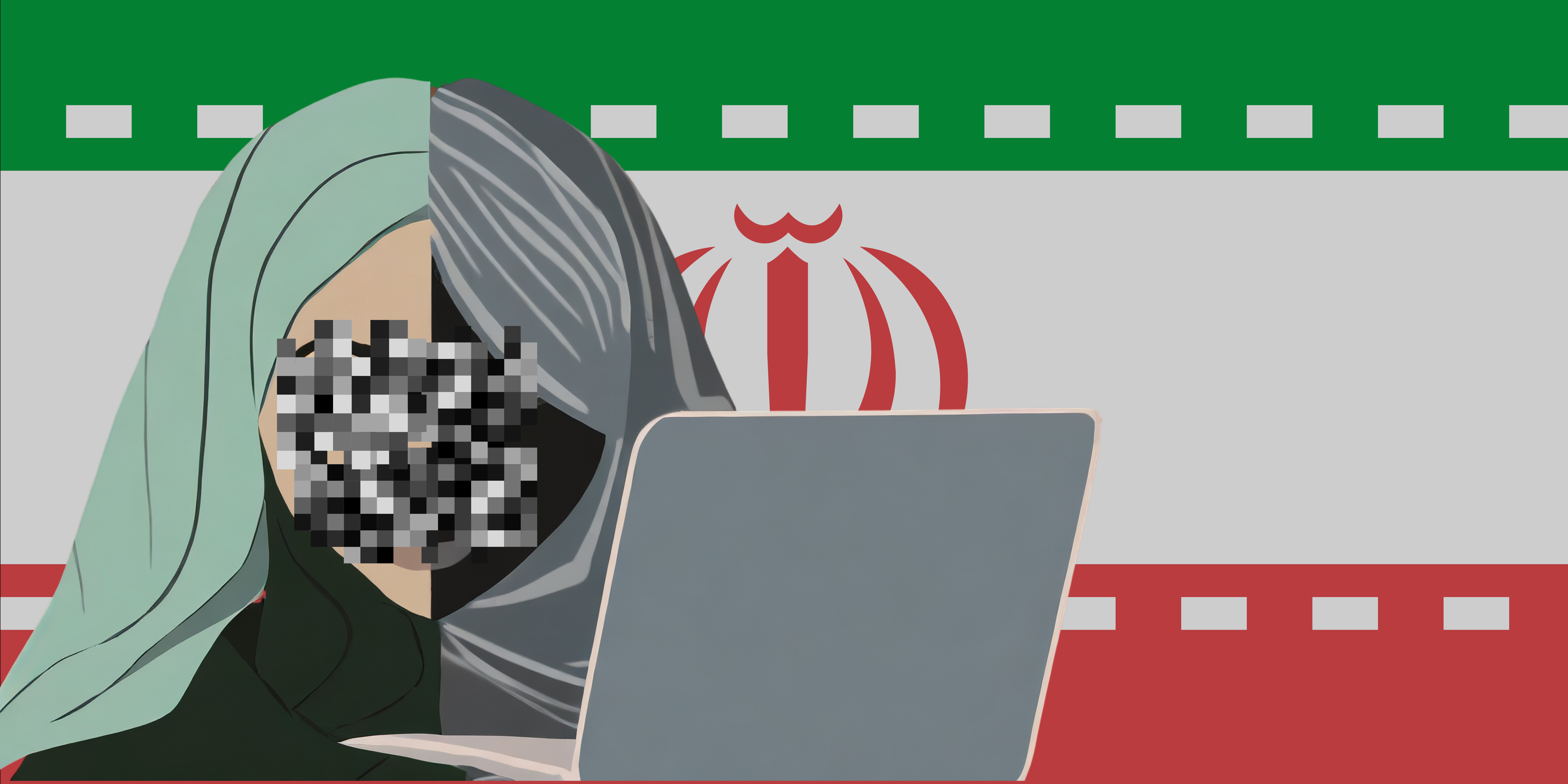For the past eight months, the ultra-conservative Iranian government and parliament have collaborated intensively to craft the “hijab and chastity” bill. In an effort to expedite the process and maintain confidentiality, The parliament decided to hand over its authority for passing the bill to one of its commissions (legal and judicial) rather than addressing it in a public session. Finally, on August 21 2022, the bill was referred to the Guardian Council for a review of its compatibility with the constitution principles and Islamic rules. However, according to the opinion published by the Guardian Council on November 25, it did not challenge the main discriminatory and harsh approaches outlined in the bill against women.
The legislation defines new frameworks dictating how Iranians, especially women, must comply with the mandatory Hijab and dress code both offline and online. It introduces regulations and penalties expressing non-compliance with hijab standards and criticizing them on the internet. The “hijab and chastity” bill should be seen as a part of the broader ambitious plan to extend territoriality into cyberspace.
Territoriality in a Borderless Space
While no State can claim sovereignty over cyberspace as a whole, but States may exercise sovereign powers in cyberspace. Such powers include jurisdiction, which is a state’s authority to regulate the conduct of natural persons or legal entities by its domestic law.
The concept of sovereignty, in essence, refers to the supreme authority over a territory. The border defines a state’s spatial boundaries, ensuring authoritative cross-border relations. Sovereign states have the power to make and enforce laws within their territory. However, applying a territory-based concept like jurisdiction in borderless cyberspace presents a challenge.
A state can assert jurisdiction over cyber infrastructure and intangibles based on the principle of territoriality, encompassing both subjective and objective territorial jurisdiction. Under “subjective territorial jurisdiction” a State may exercise jurisdiction over cyber infrastructure and their data which are located in their territory. Additionally, objective territorial jurisdiction grants a state the authority to adopt a criminal law that applies to crimes that take effect within its borders even if the perpetrator initiated the act outside of its borders. The Internet and the rise in cybercrime that it has fueled have highlighted the growing significance of the objective aspect of the territorial principle. According to the “effects doctrine” a State is entitled to exercise its jurisdiction over a conduct not occurring within its territory but resulting in harmful effects within that territory. The effects must be substantial, causing harm and damage of significance.
Tehran upholds the traditional understanding of sovereignty and the principle of non-intervention at the core of its policy towards global internet matters. Iranian cyber policy is conceiving cyberspace as a territory with virtual borders corresponding to physical state borders. This involves governance through technological control and legal authority, including traffic monitoring, firewalls, content monitoring, and ownership of internet infrastructure.
Territoriality is fundamentally projected into the National Information Network (NIN), also known as national internet. By offering domestic data centers for services in the public and private sectors, this transformative initiative aims to create a resilient network that reduces reliance on the worldwide internet. It gets closer to the official understanding of cyber sovereignty by empowering the government to cut off the nation from the internet during crises.
Iran actively pursues the NIN policy, with the goal of creating an isolated Iranian network that is independent, self-sufficient, protected from external interference, and subject to sovereign jurisdiction. The NIN emerges as a deliberate effort to delineate and safeguard cyber borders, defining the boundaries of state jurisdiction and authority. The macro-plan and architecture document of the NIN place a strong emphasis on developing a digital environment that is supportive of Islamic-Iranian culture, with its realization hinging on the establishment of the NIT.
The women’s rights movement in September 2022 acted as a catalyst, prompting the government to recognize the imperative of strengthening the legal dimensions of its cyber sovereignty policy. From the digital platforms to the streets, the veiled woman serves as a dynamic symbol, utilized by the Iranian government to articulate a discourse of authority, control, and sovereign power. However, much like city streets, in the era of cyberspace, Iranian women carve out their space on social media to authentically express themselves.
As we explore the intricacies of Iran’s cyber policy, a key query emerges: How has the official territorial cyber sovereignty policy woven itself into the multifaceted tapestry of the hijab bill’s narrative?
Hijab Bill Provisions and Cyber Sovereignty
The Hijab bill imposes severe consequences for non-compliance with compulsory hijab standards in both the physical and cyberspace, including loss of jobs and professional licenses, fines, imprisonment, and travel bans. Notably, the bill’s scope extends beyond domestic platforms and messengers to cover content shared on international platforms and social media, irrespective of the location of the creator or user.
In the following, spotlighting provisions that explicitly confront the publication of images and activities in cyberspace:
- The bill mandated the Scientific and Technological Deputy of the Presidency to withhold cooperation and facilities from those defying hijab standards in both physical and cyberspaces. This provision impacts knowledge-based companies, science and technology parks, growth centers, and innovation factories. (Article 13)
- The Ministry of Cultural Heritage and Tourism becomes the guardian against unauthorized activities in tourism, both online and offline. Should someone dare to post unveiled photos from tourist hotspots, the Ministry is duty-bound to sound the alarm to law enforcement. (Article 23)
- The Ministry of Intelligence is tasked with identifying those who, through online or offline activities, collaborate with foreign entities to promote immodesty, culture of nudity, lack of hijab, or inappropriate attire, or send related audio, video, or images to outsiders. (Article 24) Any straightforward act of posting photos and videos can easily fall within the broad scope of this article.
- The police are tasked to deploy a specialized unit for identifying individuals and monitoring purported breaches of norms in cyberspace, creating a digital watchtower that surveils and reports people to the Judiciary. (Article 28)
- A practical commitment to modesty and hijab is a prerequisite for employment in both public and private entities. Additionally, it is mandatory for private professional institutions to enforce these requirements when issuing or renewing licenses for engineers, doctors, and lawyers. Women are expected to maintain their hijab not only inside the workplace but also outside, in both the real world and cyberspace. (Article 32)
- The bill proposes harsher penalties for immodesty or failure to wear hijab in cyberspace than it does for instances of street immodesty. (Article 37)
- Celebrities committing hijab-related offenses cyberspace or non-cyberspace are not only subject to the specified penalties but also face confiscation ranging from one to five percent of their total wealth.
Even Iranians residing abroad may face identification and prosecution for sharing photos and videos without veils in cyberspace, with the possibility of receiving convictions in absentia. The bill also outlined procedures for direct government access to and withdrawal of penalty fines from individuals’ bank accounts through the Central Bank.
Concluding this discussion, the Hijab bill opens with a resounding declaration, placing the family as the core of growth, excellence, and tranquility for individuals in both personal and societal realms. The mandate against non-compliance with compulsory hijab, extending its reach from the tangible reality to the expansive cyberspace, resonates as a safeguard for the well-being of families and society at large. This broad interpretation of effect doctoring raises concerns about its compatibility with legal principles of subjective and objective jurisdiction.
From the cyber sovereignty point of view, the Iranian legislator perceives breaches of hijab standards in cyberspace as potential catalysts for the spread of divorce, societal harms, and the erosion of family values. This expansive interpretation of effect doctoring is not compatible with legal principles of subjective and objective jurisdiction.
Crucially, it is important to note that territorial sovereignty, while affording protection to states, imposes a vital obligation. This obligation compels states to safeguard the human rights of individuals within their jurisdiction.




